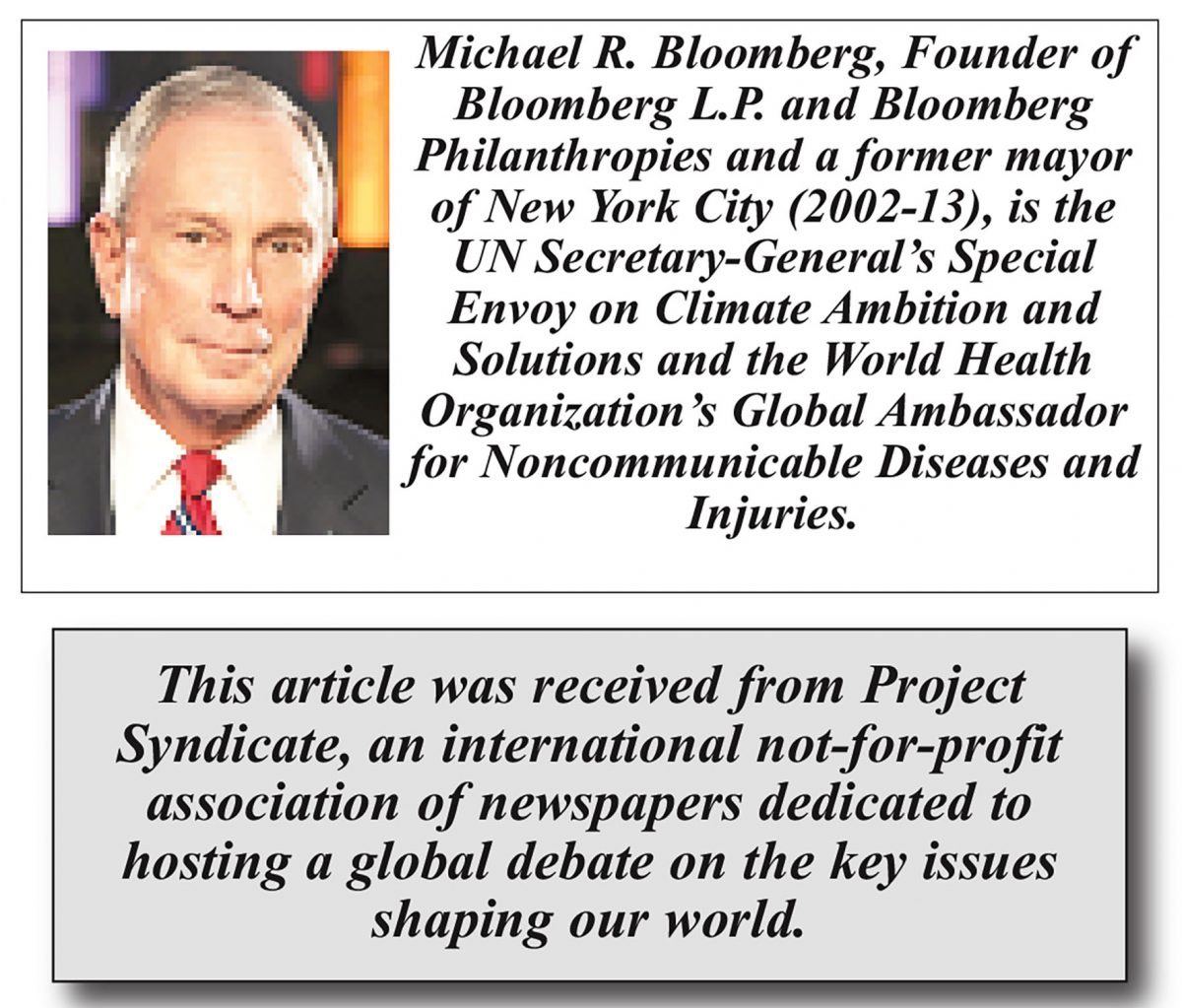By Michael R. Bloomberg
NEW YORK – Even as COVID-19 recedes into the background of everyday life, the broader decline in US life expectancy is still with us, because too many elected officials refuse to take its causes seriously.
COVID-19 has killed nearly 1.2 million Americans, making it the main reason that US life expectancy fell by 2.4 years between 2019 and 2021. But while life expectancy has started to tick back up, it is still 1.3 years lower than it was in 2019, according to the latest data from the US Centers for Disease Control and Prevention. Every racial and ethnic group now has a lower life expectancy than before the pandemic, with American Indian and Alaska Native, Black, and Hispanic people suffering the largest setbacks. Meanwhile, other countries – including Sweden, Belgium, and Denmark – have returned or nearly returned to pre-pandemic life expectancy.
The main reasons that the United States lags many other rich countries can be summed up in three words: guns and drugs. The US far outpaces other high-income countries in overdose and gun deaths, and both problems have worsened since 2019. In fact, they have reached record levels. At the same time, chronic illnesses such as heart disease, stroke, and diabetes are among the leading causes of death in the US. Obesity is a major risk factor for all these conditions, and America’s obesity rate is the highest among large, developed countries.
Despite having the world’s largest economy and the world’s most advanced health-care facilities, the US ranked 40th in global life expectancy, according to the most recent available data. And that data was released in 2019, before COVID pushed the US even further behind. Given the cascading challenges of the past five years, it probably still ranks at the bottom of the Western world.
This is a national disgrace, but it isn’t inevitable. Americans don’t have to live and die like this. We can use public health – the science of protecting as many people as possible from diseases and injuries – to preempt threats every day. Change starts with listening to public-health experts and developing practical, data-driven responses.
Unfortunately, the pandemic’s path of destruction did not spare the field of public health. Scientists and doctors were subjected to relentless attacks from partisans trying to score political points, and public trust in their views declined as a result. Of course, scientists and doctors are fallible like the rest of us. But ignoring their warnings and guidance is deadly. We saw that during the pandemic and during the vaccine rollout, and we are still seeing it today.
Even before the pandemic, public health was undervalued, because its power is so often hidden. Patients leaving a hospital after receiving emergency surgery are almost always grateful, and they know exactly whom to thank for saving their lives. By contrast, public-health interventions save lives every day, but those who are saved rarely even know it. Such interventions – whether it’s a seatbelt or an airbag, a smoke-free workplace or a trigger lock – do not produce grateful patients (or grateful policymakers, who could better fund them), because they keep people out of hospitals (and the morgue).
Strengthening trust in those who work in public health begins with raising awareness of what they do and how they do it. That is why the new four-part documentary series The Invisible Shield (produced by RadicalMedia, supported by Bloomberg Philanthropies, and airing in the US on PBS) aims to shine a spotlight on public health and the historic gains it has made possible.
From 1900 to 2000, US life expectancy increased by more than 30 years, and child mortality plummeted as measles and diphtheria were nearly eliminated. By 1980, the world had eradicated smallpox. Polio could be next. These extraordinary successes, once unimaginable, show what is possible when societies commit to keeping children safe and extending all our lives. But the political courage to take the steps necessary to save and extend lives – from enacting stronger gun laws to taxing tobacco – seems to be in shorter supply than ever before.
During my 12 years as mayor of New York, average life expectancy in the city increased by three years, because we refused to bow to lobbyists and naysayers who opposed our groundbreaking public-health protections. Some of those protections, such as posting calorie counts and banning artificial trans fats, proved so popular and effective that the federal government later adopted them. But over the last decade – and especially after the pandemic – data-driven public-health interventions have stalled in Washington.
To push life expectancy back to its pre-pandemic highs – and then higher – we need elected officials to be braver and bolder in deploying the “invisible shield.” And for that, we need voters who recognize the stakes and hold their representatives’ feet to the fire.
Copyright: Project Syndicate, 2024.

